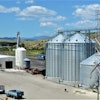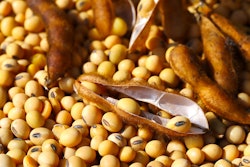
A surplus of low-cost wheat in China is replacing significant volumes of corn in its large animal feed market, say feed makers and analysts, curbing consumption of corn and soymeal and potentially reducing demand for imports.
According to a report fromReuters, Brazil has produced a record soybean crop this year but shipments to China are currently behind last year’s rate. Meanwhile, China has cancelled more than 800,000 tonnes of U.S. corn orders in recent weeks as buyers await cheaper options later in the year.
China may shift to Brazil for corn, surpassing U.S. as top exporter
Bloombergrecently reported corn futures in Chicago came under pressure from Chinese cancellations of 832,000 tons in early May. Increased competition from Brazil is underscored by forecasts for it to pass the U.S. as the top exporter this year.
China went on a corn buying spree in March, buying almost 4 million tons announced by the U.S. government between March 14 and April 14.
U.S. corn became less competitive, with supplies from Brazil about $30 a ton cheaper for delivery in the third quarter, traders said.
In April, China became world's largest wheat importer
China, the world’s top wheat producer, started harvesting what is expected to be a bumper crop in May, but it has alsobought record volumes of wheat from overseas, particularly Australia.
In April, USDA’s Foreign Agricultural Service said China wheat imports are forecast up to 12 million tons this year. Competitive pricing had prompted China to import large volumes of both milling and feed quality wheat. At the time, some Chinese feed mills had substituted corn with imported wheat in feed rations.
TheReutersreport noted switching to wheat began in the south where wheat is harvested first, but expanded across northern China this month and will likely be a major feed ingredient until the end of the summer. Some companies are switching out as much as half of the corn they normally use in feed for wheat.
Higher wheat usage will also push down consumption of soymeal, according to feed makers. Wheat has a higher protein content than corn, reducing the need for the protein-rich soy component in feed.





















